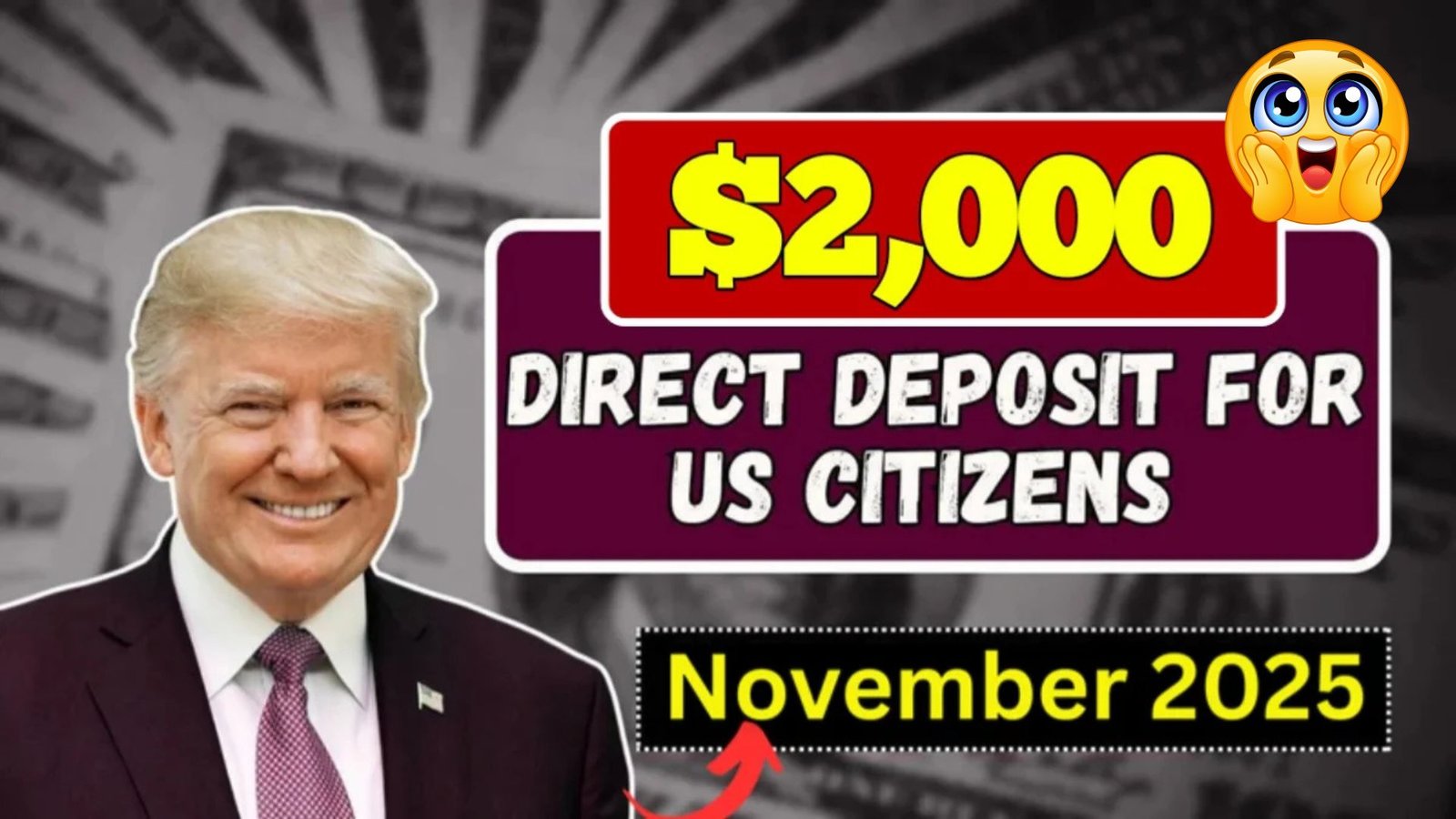Imagine checking your bank app on a crisp November morning, only to see a mysterious $2,000 direct deposit pop up from the IRS. Heart racing, you wonder: Is this the financial lifeline we’ve all been whispering about? But hold on—what if I told you this tantalizing rumor is more smoke than fire? Stick with me as we unravel the hype, dive into the real story, and uncover what actually could land in your account. By the end, you’ll have the clarity to spot the fakes and grab any legit wins.
What Is This $2,000 Direct Deposit Rumor All About?
Picture this: Social media explodes with posts claiming every U.S. citizen qualifies for a $2,000 stimulus boost via direct deposit in November 2025. It’s pitched as a quick cash infusion to ease holiday woes or inflation bites. But here’s the twist—it’s not an official program. This buzz stems from unverified viral claims, often tied to political chatter about tariff rebates.
At its core, the idea echoes past IRS relief efforts, like the COVID-era checks. Yet, no government memo backs this one. Teasing more: Could it evolve into something real? Let’s peel back the layers.
The Surprising History of U.S. Stimulus Payments
Remember 2020? The world ground to a halt, and suddenly, $1,200 direct deposits appeared like magic. That was Round 1 of the Economic Impact Payments (EIPs), born from the CARES Act. Fast-forward: Round 2 hit $600, Round 3 soared to $1,400 per person.
These weren’t handouts—they were advances on tax credits, targeted at low-to-middle-income families. Untold story? Over 476 million payments totaled $814 billion by 2021, per IRS data. Now, 2025 rumors remix this playbook, linking to Trump’s floated “tariff dividend” idea. Intriguing, right? But history whispers caution: Not every echo becomes a roar.
Why This Rumor Matters in 2025’s Economy
In a year of sticky inflation and election echoes, who wouldn’t crave extra cash? If real, a $2,000 stimulus could spark spending, lift spirits, and buffer rising costs—think groceries up 25% since 2020. It builds excitement: Imagine paying off debt or funding a dream trip.
But the real value? Debunking myths protects you from scams. With national debt at $38 trillion, unchecked rumors fuel false hope. Today, it’s relevant because it spotlights ongoing needs—like child tax credits or SSDI adjustments—that are delivering relief. The anticipation? It’s in knowing what’s truly coming.
How Can You Actually Benefit from Real IRS Relief?
Don’t chase ghosts—focus on what’s tangible. First, check your 2024 tax return for unclaimed Recovery Rebate Credits; some got December 2024 catch-ups. For 2025, eye the Earned Income Tax Credit (EITC)—up to $7,830 for families.
To engage: Update your IRS direct deposit info via the Get My Payment tool (if active) or file accurately. Game-changer? Set up alerts for official announcements. Benefit hint: Low-income folks might snag advance child credits soon. Ready to act? We’ll cover eligibility next.
| Real IRS Relief Programs vs. $2,000 Rumor | Description | Amount (2025 Est.) | Eligibility Basics |
|---|---|---|---|
| Economic Impact Payments (Past) | COVID-era advances | Up to $1,400/person | AGI under $75K single |
| Child Tax Credit Advance | Monthly family aid | $300–$500/child/mo | Families with kids under 6 |
| EITC Refund | Tax credit boost | Up to $7,830 | Earners under $63K |
| $2,000 Rumor | Unconfirmed tariff rebate | $2,000 (alleged) | All U.S. citizens? (False) |
This table reveals contrasts: Real perks demand proof of need, unlike the rumor’s blanket promise.
Jaw-Dropping Facts and Stats on Stimulus History
Buckle up—these numbers will stun. Fact 1: 85% of EIP recipients got funds via irs $2,000 direct deposit, zipping cash in days, not weeks. Stat: Round 3 alone reached 130 million households, injecting $411 billion into the economy.
Record breaker? The fastest rollout: 80 million payments in four weeks during 2020. For 2025, here’s the shocker—no new $2,000 wave, but 1 million late filers scored $1,400 extras in late 2024. Insight: Scams mimicking these siphon $2.7 billion yearly, per FTC. Mind blown yet?
| Stimulus Milestone | Year | Payments Issued | Total Value |
|---|---|---|---|
| Round 1 Launch | 2020 | 160M | $267B |
| Peak Speed | 2021 | 80M in 4 weeks | $112B |
| Total EIPs | 2020-21 | 476M | $814B |
| 2024 Catch-Ups | 2024 | 1M | $1.4B |
These records highlight efficiency—and why fakes erode trust.
Insider Tips: Spotting Scams and Maximizing Real Benefits
As your go-to guide, here’s the secret sauce. Tip 1: IRS never demands upfront fees for stimulus—if it sounds too easy, it’s a trap. Use official sites only; verify via irs.gov.
Advice: Track your Adjusted Gross Income (AGI) now for EITC eligibility. Pro move? Enable two-factor on bank apps to shield direct deposits. For families, simulate credits on the IRS withholding estimator—could mean bigger paychecks. Insider edge: Join free tax clinics for personalized audits. These hacks turn hype into real wins.
Frequently Asked Questions: Unraveling the $2,000 Mystery
Q: Is the $2,000 direct deposit really coming in November 2025?
A: No—the IRS confirms zero new federal stimulus checks. It’s a viral hoax tied to unpassed proposals.
Q: Who would qualify if it were real?
A: Rumors say all U.S. citizens over 18, but officially? Past rules favored AGI under $80K, dependents included. Check your status via IRS tools.
Q: How do I update my direct deposit for future payments?
A: Log into your IRS account or use Form 8888 on returns. Takes minutes—pro tip: Link a secure account.
Q: Are there any legit November relief options?
A: Yes! SSDI/SSI gets COLA bumps (2.5% for 2025), and tax refunds roll out. No action needed for most.
Q: What if I see a suspicious email about this?
A: Delete it. Report to phishing@irs.gov. Scammers prey on hope—stay vigilant.
These answers demystify the chatter, arming you with facts.
Wrapping Up: The Real Payoff Awaits
We’ve journeyed from rumor-fueled thrill to grounded truth: No $2,000 direct deposit bonanza this November, but the IRS‘s proven stimulus legacy reminds us relief does exist—for those who claim it. The key takeaway? Empowerment lies in verification, not virality. Ditch the doubt, audit your taxes today, and secure what’s yours. Share this with a friend dodging scams, or dive deeper into EITC guides. What’s your next financial move? Drop it in the comments—let’s build wealth together.



